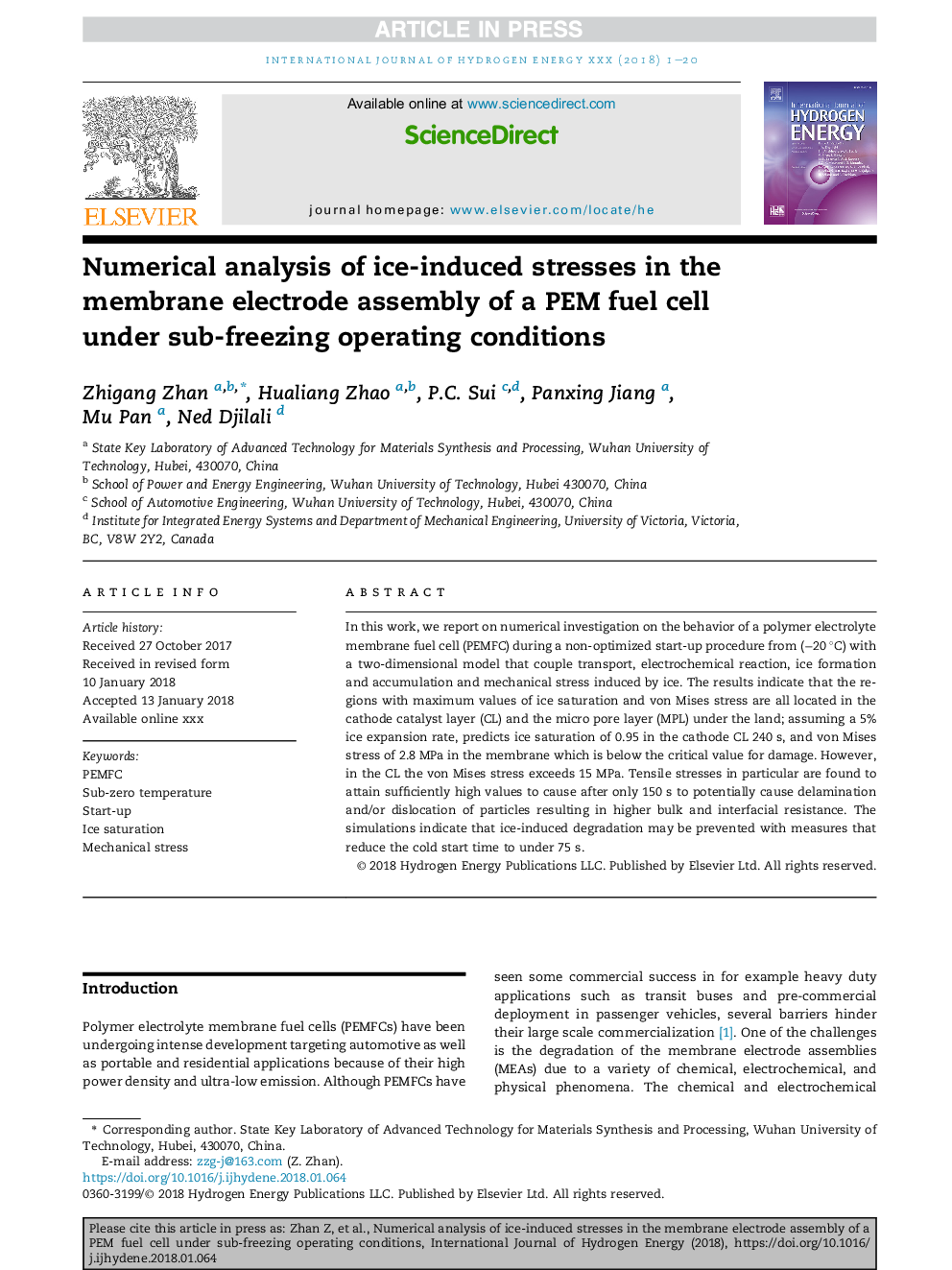| Article ID | Journal | Published Year | Pages | File Type |
|---|---|---|---|---|
| 7707401 | International Journal of Hydrogen Energy | 2018 | 20 Pages |
Abstract
In this work, we report on numerical investigation on the behavior of a polymer electrolyte membrane fuel cell (PEMFC) during a non-optimized start-up procedure from (â20 °C) with a two-dimensional model that couple transport, electrochemical reaction, ice formation and accumulation and mechanical stress induced by ice. The results indicate that the regions with maximum values of ice saturation and von Mises stress are all located in the cathode catalyst layer (CL) and the micro pore layer (MPL) under the land; assuming a 5% ice expansion rate, predicts ice saturation of 0.95 in the cathode CL 240 s, and von Mises stress of 2.8 MPa in the membrane which is below the critical value for damage. However, in the CL the von Mises stress exceeds 15 MPa. Tensile stresses in particular are found to attain sufficiently high values to cause after only 150 s to potentially cause delamination and/or dislocation of particles resulting in higher bulk and interfacial resistance. The simulations indicate that ice-induced degradation may be prevented with measures that reduce the cold start time to under 75 s.
Related Topics
Physical Sciences and Engineering
Chemistry
Electrochemistry
Authors
Zhigang Zhan, Hualiang Zhao, P.C. Sui, Panxing Jiang, Mu Pan, Ned Djilali,
